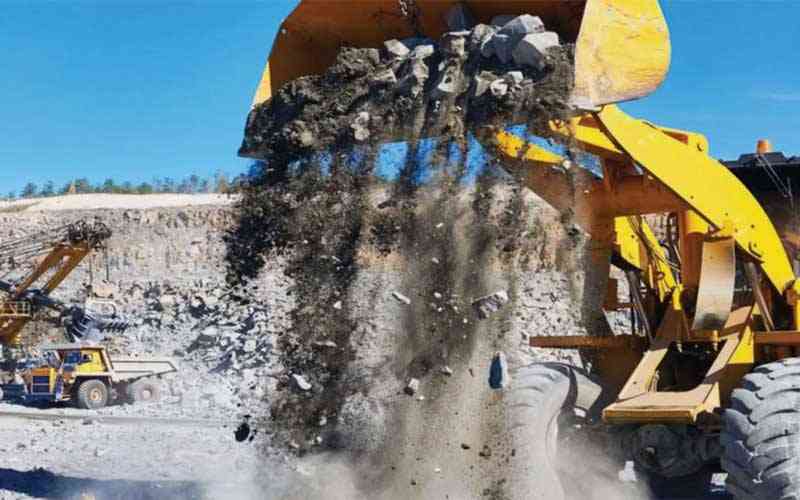
THE Parliamentary Portfolio Committee on Mines and Mining Development has proposed that Treasury allows the Mines ministry to retain a minimum of 25% of its revenue as reserves, businessdigest can report.
This will enable the ministry to pursue some of its initiatives without depending entirely on the Treasury, according to Remigious Matangira, head of the committee.
“The ministry collected ZW$69,9 billion in inspection fees from January to 30 September 2023 against a target of ZW$200 billion for the whole year translating to (35%) of the revenue target. All the revenue was surrendered to the Treasury,” Matangira said in a presentation made at the pre-budget meeting last week.
“The ministry should be allowed to keep at least 25% of its collections as retention funds. This will allow it to pursue some of its projects without relying wholly on the Treasury.”
Apart from inspection fees, the ministry collects fees for applications, prospecting licences, registration, renewals, and transfers among others.
For 2024, the Treasury capped the estimated expenditure at ZW$94,65 billion, a figure Matangira said fell short of their requirements and jeopardises the industry's sustainability.
The ministry had requested a vote of ZW$696 billion.
“This amount fell short by ZW$601 billion to meet the ministry’s bid and administration was allocated ZW$32,9 billion from a bid of ZW$255,8 billion,” the committee submitted.
- Can African mining ever be sustainable?
- Can African mining ever be sustainable?
- Letters: Educate us about sanctions
- ‘Mining sector to miss US$12bn target’
Keep Reading
Mining development and management made a bid of ZW$243 billion and was allocated ZW$20,8 billion. Capital made a bid of ZW$197 billion but only got ZW$13,5 billion.
“Treasury should allocate an additional ZW$300 billion towards critical expenditure items identified especially towards; rolling out of the mining cadastre information management system; capacitation of the metallurgical department; minimisation of mineral leakages; and capacitation of the mining industry loan fund; and purchase of stands for construction of provincial mining offices,” Matangira said.
The committee found that the ambitious US$12 billion mining industry by 2030 should be a function of deliberate fiscal policies like setting up a mining industry loan fund to small-scale miners.
He said there seemed to be a disjuncture between the word and spirit of the National Development Strategy 1 (NDS1) document on value addition and beneficiation.
“Several minerals continue to be exported in their raw or semi-processed form. The Treasury should allocate funding towards value-addition and beneficiation programmes. The construction of a gemmology centre becomes critical. Value addition in the lithium value chain should also be expedited,” Matangira said.
“The NDS 1 placed the mining industry at the pinnacle of the national development agenda. It identifies mining, agriculture and tourism as the key economic sectors in the country.
“The aforementioned triad is identified as the salient cog in achieving an empowered and prosperous upper middle-income society by 2030. It, therefore, follows that strategic allocation of resources especially on capital projects is imperative if the country is to realise Vision 2030.”
He said there was need to move beyond catchphrases and taglines and show seriousness in the way financial resources are allocated.
“Beneficiation and value addition should be seen in action not as mere rhetoric. This calls for serious funding towards mining development,” Matangira said.
Currently, the mining industry is being negatively affected by declining mineral prices, power cuts and foreign currency shortages.
As at November 8 2023 exchange rate was US$1:ZW$5 738,72.







